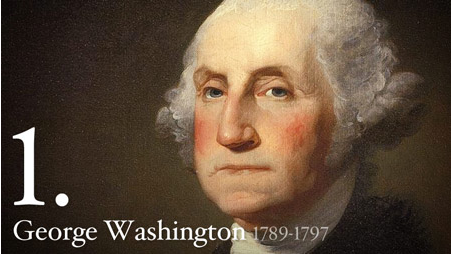
George Washington, revered as the father of his country, served as the first President of the United States from April 30, 1789, to March 4, 1797. His presidency laid the foundation for the young nation and set important precedents for future leaders. Let’s delve into a comprehensive timeline of Washington’s presidency, examining key events and decisions that shaped his legacy and the course of American history.
Inauguration and Early Days (1789)
- April 30, 1789: George Washington is inaugurated as the first President of the United States on the balcony of Federal Hall in New York City. In his inaugural address, Washington emphasizes the importance of unity and a strong federal government.
- April 30 – August 3, 1789: Washington forms his cabinet, appointing Thomas Jefferson as Secretary of State, Alexander Hamilton as Secretary of the Treasury, Henry Knox as Secretary of War, and Edmund Randolph as Attorney General. This diverse group of advisors represents different perspectives and helps Washington navigate the complexities of governing.
- June 1, 1789: The first session of the United States Congress convenes in New York City. Washington delivers his first annual message to Congress, setting the tone for his administration’s priorities, including financial stability, national defense, and the protection of individual liberties.
Establishment of Government Institutions and Policies (1789-1791)
- September 24, 1789: Congress passes the Judiciary Act of 1789, establishing the federal court system, including the Supreme Court with Chief Justice John Jay. Washington appoints the first federal judges, laying the groundwork for the judiciary’s role in interpreting the Constitution.
- February 25, 1791: Congress passes the First Bank of the United States, at the urging of Treasury Secretary Alexander Hamilton. Washington signs the bill into law, establishing the nation’s first central bank to manage government finances and promote economic stability.
- December 15, 1791: The Bill of Rights, comprising the first ten amendments to the Constitution, is ratified by the states. Washington supports the addition of these amendments to safeguard individual liberties and address concerns about the powers of the federal government.
Foreign Affairs and Neutrality (1793-1794)
- April 22, 1793: Washington issues the Proclamation of Neutrality, declaring that the United States will remain impartial in the conflict between France and Britain during the French Revolutionary Wars. This proclamation reflects Washington’s commitment to preserving American interests and avoiding entanglement in foreign conflicts.
- August 20, 1794: The Whiskey Rebellion erupts in western Pennsylvania in response to the federal excise tax on whiskey. Washington mobilizes a militia force to suppress the rebellion, asserting the authority of the federal government and demonstrating its ability to enforce laws.
- November 19, 1794: The Jay Treaty is signed with Great Britain, aiming to resolve issues stemming from the Treaty of Paris (1783) and improve trade relations between the two countries. Despite controversy and criticism, Washington submits the treaty to the Senate for ratification, setting a precedent for executive authority in foreign affairs.
Farewell Address and Legacy (1796-1797)
- September 19, 1796: George Washington publishes his Farewell Address, advising against permanent alliances, partisan politics, and sectionalism. He reflects on the accomplishments and challenges of his presidency, urging future generations to uphold the principles of the Constitution and maintain national unity.
- March 4, 1797: George Washington’s second term comes to an end as he steps down from the presidency, setting another important precedent for the peaceful transfer of power. He retires to Mount Vernon, symbolizing the transition from revolutionary leader to private citizen and cementing his legacy as a statesman of unparalleled integrity.
George Washington’s presidency was a pivotal period in American history, characterized by the establishment of essential institutions, the assertion of federal authority, and the articulation of enduring principles of governance. As we examine the timeline of his presidency, we gain insights into Washington’s leadership style, his approach to governance, and his enduring impact on the nation he helped to create.